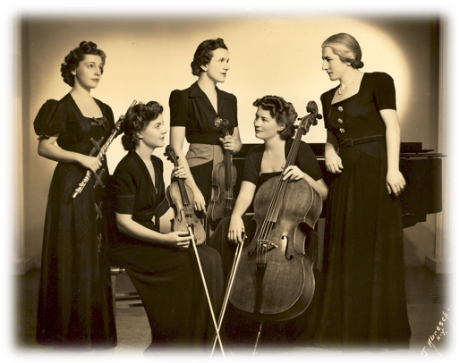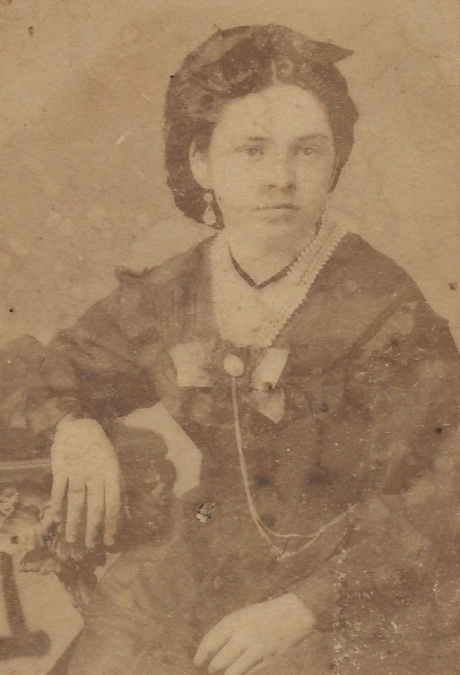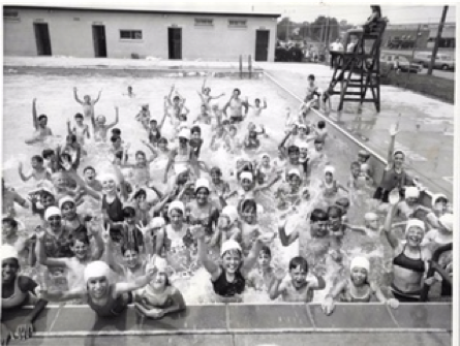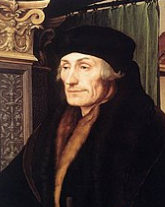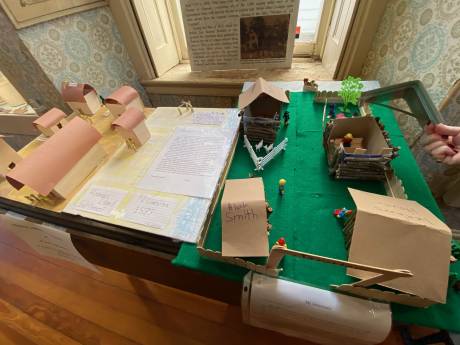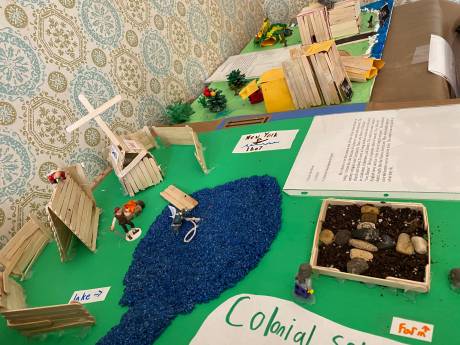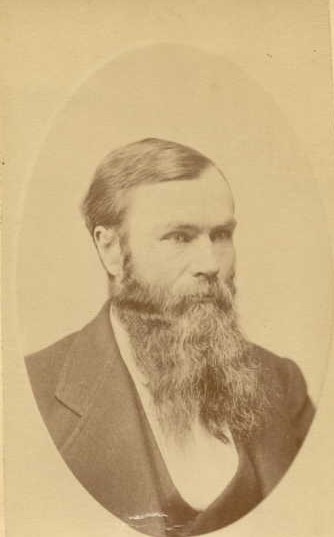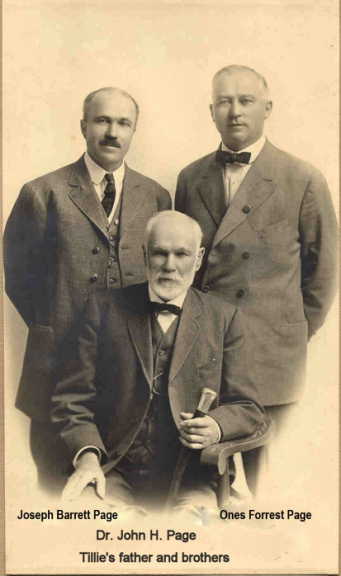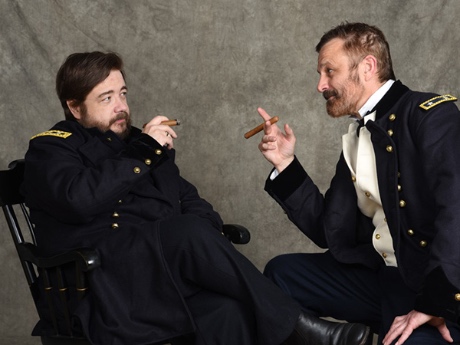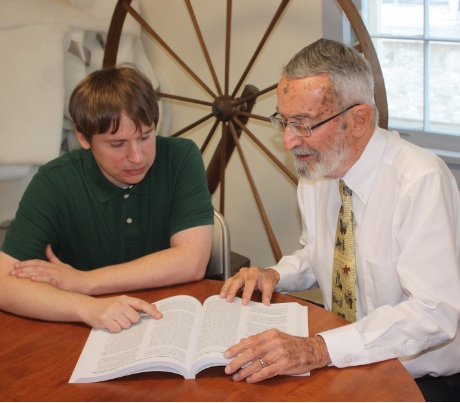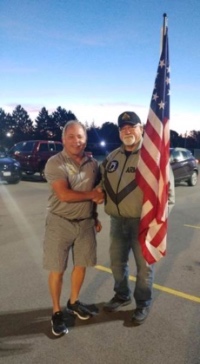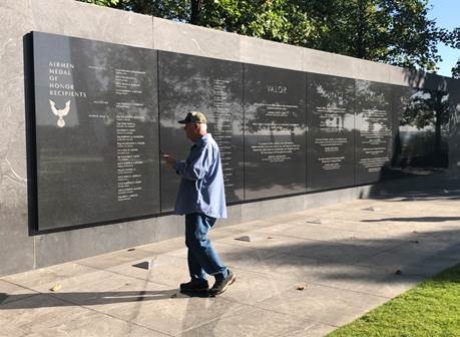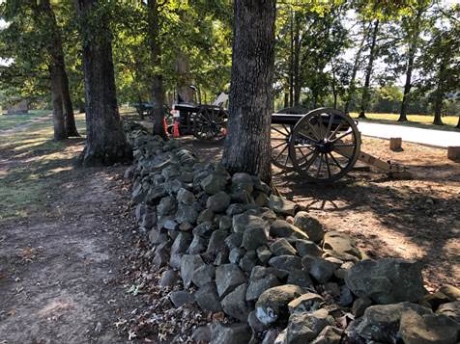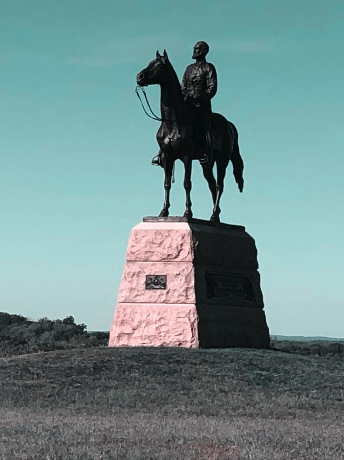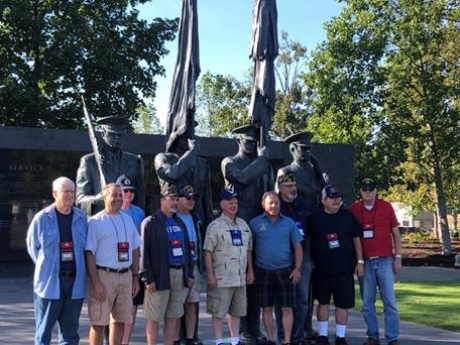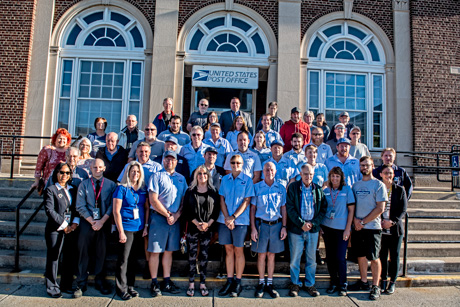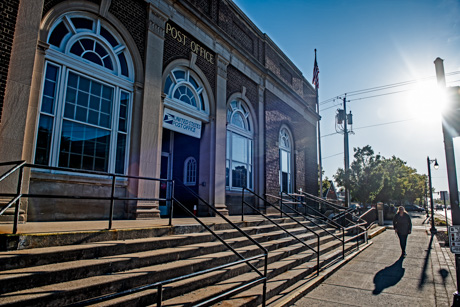How I spent my summer vacations and college nights -- working
"Hot town, summer in the city, back of my neck gettin' dirty and gritty" -- The Lovin' Spoonful, #1 on Billboard Hot 100, August, 1966
For every teen there are two coming-of-age situations (well really three, but I can't write about one of them here). The first is learning to drive and getting a driver's license. Over the years safety concerns have changed that one somewhat, but it's still a big deal for most.
The second one involves finding and working at a summer job.
You can ask almost any older person and their summer jobs during high school and college are rife with memories -- good, bad, funny, and often becoming more nostalgic as the years pass by. Drug store, hot dog stand, lifeguard, or mowing lawns -- we all had to start somewhere.
Those jobs were our first foray into the working world, a chance to be independent and have some money of our own. But due to our being so young and inexperienced, they also resulted in some hilarious screw-ups and lessons learned the hard way.
E. coli Anyone?
I got my first job at 16 the way a lot of kids do because my dad knew someone. Dad was a paper goods salesman and one of his best customers was John Castronova who owned The Red Top restaurant.
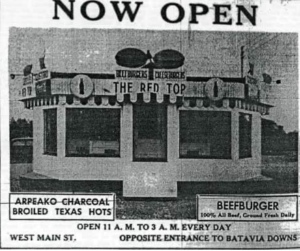
One memorable order that sticks out in my mind is when two guys, who obviously had just come from spending quite a while at a bar, ordered “Cannibal Sandwiches.”I had never heard of this but the grill man had.
They wanted hamburgers put on the grill for about 30 seconds and then put on a roll with onions. So, they were essentially eating raw beef. It was as gross as you would imagine and I don't think the FDA would approve.
I only worked about 16 hours a week, but eight of those were on Saturday night from 6 p.m. until 2 o'clock Sunday morning.
I lived at the other end of town so when we got out one of the older guys would give me a ride to East Main and I would walk the rest of the way to our house on North Spruce. I would then spend about 30 minutes in the hot shower at 3 a.m. to get the grease off myself.
I was all too happy to be done with that job at the end of the summer and return to Notre Dame for my senior year of high school.
Factory Foul-ups
Between my senior year and freshman year of college I had a tough time finding a job. I had a couple friends who worked at the Melton Shirt Factory on Liberty Street and they were able to get me some hours filling in when extra help was needed.

The owner/manager's name was Abe and he had a thick New York City accent. He was not exactly a patient guy and he would yell at the top of his lungs, “Dave, where's the shoits (shirts)?”
At the end of a day in that blast furnace I would, unlike the previous summer at the hot dog stand, stand for 30 minutes in a cool shower.
Apparently I didn't learn my lesson about factories though.
The following summer between freshman and sophomore year my friend Jim and I got a job at a company in the Industrial Center on Harvester Avenue. It was called Ritz-Craft and they built mobile homes.

That should have been an omen for me as I only lasted a few weeks as a “carpenter.” I wasn't what you'd call a skilled craftsman and constantly made mistakes until finally the foreman had to let me go. Being “all thumbs” was a mild way to describe me.
But, out of the frying pan into the fire I went next. I still needed money so I moved down the way a little into another company that made equipment for pool tables. It was in the former Massey-Harris plant, which once made tractors and other farm equipment.
My job was to run a machine which ground up miscast billiard balls and other table parts so the plastic could be reused. This machine sounded like if a Boeing 747 jet was taking off and someone was throwing rocks into the engines.
I recall that we would start at 8 a.m. and we would get a 15-minute break at 10. I would start and think to myself, “It's got to be almost break time.” I'd look at my watch and it would be 8:15. Those were very long days and a kid was never happier to get back to school like I was that year.
Fortunately, that experience was the last of my factory follies.
Things Go Better With Coke
The summer between my sophomore and junior years, Jim and I were able to get hired by the Coca-Cola Company on East Main Street in Batavia. Even though the first year didn't go so well for me, I was able to come back for three more summers after that.

I'm not sure why I got hired the first summer because a major part of the job was driving and I didn't have a license. The bosses would get really annoyed when they'd ask me to go make a delivery and I couldn't. Plus, all the vehicles were standard shift.
One time a boss asked me to move a truck away from a doorway and, rather than tell him one more time that I couldn't, I decided to try. As you could imagine that didn't go well.
After coming close to ramming two other trucks and the side of the building I was banished to stacking crates. I have no idea why they kept me on. My charming personality perhaps?
To make matters worse, I had a health problem that summer requiring a week's stay in St. Jerome's Hospital. (That's a whole other story -- one night I was served fruit for dinner and one of the nurses was so old that I wanted to get out of bed to help her help me).
Subsequently, I had to withdraw from my fall semester at St. John Fisher College and have surgery at Strong Memorial in Rochester.
So, the next year I made up my mind that I had to get my driver's license and learn to drive a stick shift, so I had at least a prayer of a chance to be rehired at Coke. Which I did, but the driving a standard shift part turned out humorously.
I learned from my almost 70-year-old gramma in her little Plymouth Valiant at the Batavia Downs parking lot. Hey, whatever it takes...
It took some slick persuading and a nervous demonstration that I could drive a stick, but I got my job back and I rode that horse (trucks actually) for the next three summers until I got a teaching job.
Working summers at Coca-Cola could be long hours and I think I originally we were paid $1.25 per hour, but it certainly topped factory work.
The hardest part was loading the heavy glass bottle cases of soda (or pop as it was called in Batavia) onto the delivery trucks at the end of the day.
But, during the day, we might be called upon to drive to Le Roy or Medina or Warsaw to deliver or pick something up, which meant a nice easy ride out in the country.
Crazy Carnivals
Another part of the job might be working a Friday or Saturday night at one of the many volunteer firemen's carnivals in the area. This would entail setting up the Coca-Cola equipment and then mostly just sitting around and taking it down at the end of the night.
A side bonus of entertainment at these carnivals was watching the antics that sometimes occurred at or near the beer tents. We could look on with amusement safely from a distance as security or sheriff's deputies tried to contain some of the overexuberant locals who had overextended their quota of Jenny Cream Ales.
There were some characters at that job, too.
The assistant manager was nicknamed “Clipboard.” He was a stickler for scheduling and neatness. When he would get in a bad mood he would spend the whole day rearranging the entire warehouse with the forklift (we called it a towmotor). The foreman was an ex-military man we called “Sarge.” You've seen movies where the drill sergeant could blister the paint on the wall with his cursing? That was him.
He told us that if he ever saw us drinking Pepsi or buying it in the store we 'd have to answer to him. So, we loved our Coke -- in front of him at least.
Actually, we had a Coke machine in the warehouse that would vend a 6-ounce bottle for 5 cents. And it was hot in there, so for a nickel at a time you could quench your thirst with an ice-cold Coke, right?
Well, you've probably heard the old wives' tale that Coke could take rust off a car bumper. Probably not, but if you drink about 10 of those a day for a while you might be more inclined to believe it.
Eventually, it got to the point where even looking at a bottle of Coke would make me nauseous. Thankfully, we also sold ginger ale and that was a lot easier on the stomach.
Over the course of four summers a lot of things happened while working for Coca-Cola that could be stories on their own. But, probably the craziest incident took place in 1969 about a month before I finished my tenure there.
Bee Unprepared
It was a Saturday morning and I had been assigned to take a truckload of tanks of Coke and dispensing equipment to a company picnic at Hamlin Beach State Park. I was to set everything up and then stay there for the day and then bring it back to Batavia afterward.
I had just passed through the Village of Brockport headed north on Route 19 when I saw a yellowish-brown “cloud” that seemed to be floating over the road.
“What is that?” I thought, “a bunch of falling leaves?” Well, there was no avoiding whatever it was and almost instantly I drove into it.
To my immediate shock I realized that I had driven smack into a swarm of bees! As the blues lyric goes, “If it wasn't for bad luck, I wouldn't have no luck at all,” and the truck and I had showed up at exactly the wrong time.
Hundreds of bees were suddenly covering the windshield and, since the windows were open, in the cab flying around my head. I wasn't afraid of bees but this was unbelievable.
The next thing I knew I was heading straight for a utility pole. There was no way to swerve at that point, so the best I could do was to hit the brakes and hold on. As the truck slammed into the pole I saw an electric transformer flying over the top and I knew this was no little fender bender.
As soon as the truck stopped completely, bees were buzzing all around me and I jumped out the door and ran across the road as fast as I could. In retrospect it was good that power lines hadn't fallen on the truck because that never crossed my mind.
I noticed that other cars had stopped and people were getting out and tentatively advancing toward me, probably worried about live wires that I hadn't considered.
I took stock of myself and was pretty sure I wasn't injured, but I never noticed until later that I hadn't been stung even once! I guess I did have a little luck after all.
As they say, all hell broke loose then. Sirens, sheriffs, state troopers, fire trucks, an ambulance, and eventually utility trucks, responded. The trooper asked me what happened. Why did I lose control? Had I been drinking? Drugs?
So, in response I took him over to the truck. All over the hood, on the windshield, and in the cab were dead bees. Where did the swarm go though? The queen must have moved on and the others followed her I guess.
Then came the part where I had to go into the truck and call in on the radio (after the utility workers determined it was safe of course) and tell what had happened. You can imagine how that conversation went. “YOU WHAT!!?”
After a while the manager came with a different truck and a couple guys who were not having an easy time keeping from laughing. We transferred all the stuff (which had not been damaged) to the other truck and I continued on my way to Hamlin Beach with the guys' voices ringing in my ears, “Watch out for bees, Dave.”
The damaged truck was towed away and I got a respite (except for explaining to the customers why I was late) until Monday morning.
It was a good thing I only had a few weeks left to work because I was chided and teased about my bee encounter every single day until I left. “Hey Dave. Don't you need some calamine lotion? I think you have hives.” And so on. All day. Every day.
Rent-A-Cop Caper
One last job to mention was a part-time one during my senior year at St. John Fisher.
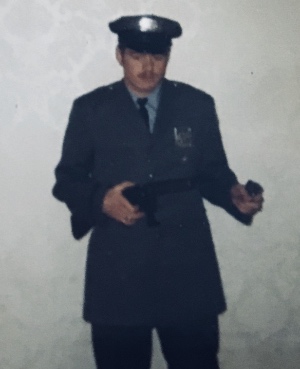
Two nights a week from 4 to midnight, clad in my uniform complete with police-style hat (left photo, with toy guns), I would ”guard” a parking lot, the student union or a science building.
One night I was on duty checking parking in a lot by the student dormitories.
Suddenly my car was surrounded by about 20 guys. They informed me that as part of a fraternity initiation they were going to “kidnap” me, tie me up, and leave me in a dorm basement. They stated that after a few hours they would call someone to come set me free.
Some quick thinking was obviously called for by me. I said something like, “Guys, no please. I'm a college student just like you at Fisher. I still have a paper to write after I get off work at midnight" (probably not true). My brain was racing. I needed to get out of this.
But how? Of course the same way you get out of a lot of things -- throw someone else under the proverbial bus.
“Hey guys,”I said, “if you go to the Pinkerton office around the corner, my boss is in there alone. He's always on my case and he's the one who put in all the horrible parking rules that you hate (doubtful). It would be so much funnier if you did this to a boss, especially that guy."
“Yeah!” one of them agreed. “We know the guy you mean. We can't stand him! Right guys? Oh, this will be sweet. C'mon, let's go get him!"
And off they went hooting and hollering.
As soon as they were out of sight, I wasn't taking any chances. I sped out of there to a desolate lot on the far side of the campus and stayed there until quitting time and then went home.
I never did find out if the frat guys carried out their plan because what was I gonna do? Ask the boss the next time I came to work? I had escaped and that was really all that mattered.
So, over the years I had a variety of summer jobs which resulted in some experiences that stick in my mind to this day.
Then, I went on to a long elementary school teaching career, which afforded me July and August off. And guess what? Yup. More summer jobs.
Like a lot of teachers, I painted houses in the summer. No more factory jobs. But, I did encounter my share of bees.
Images and photos courtesy of Dave Reilly.

